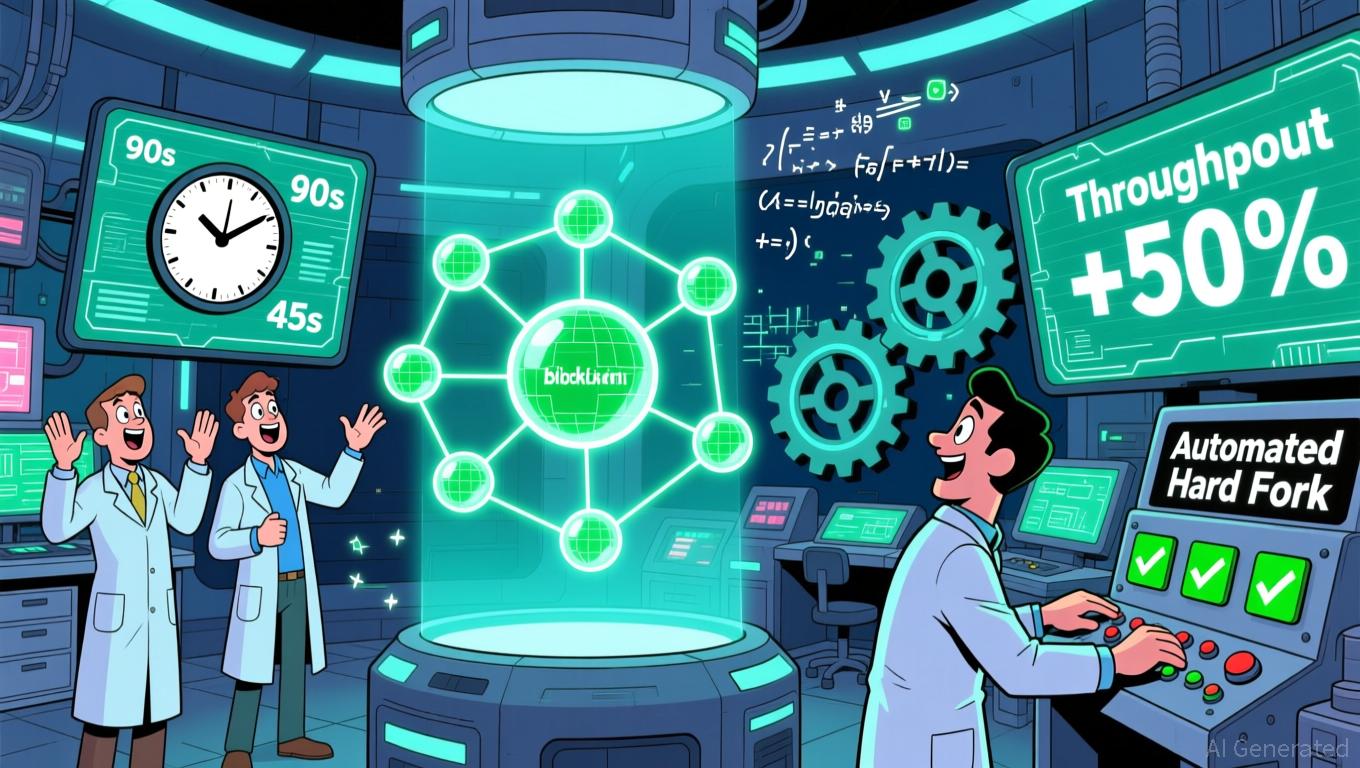Ethereum News Today: Ethereum’s Vision for 2026: Building Quantum-Safe Infrastructure to Power AI-Enabled Commerce
- Ethereum co-founder Vitalik Buterin advocates hybrid security architectures combining ZK proofs with MPC, FHE, and TEE to enhance blockchain privacy and post-quantum resilience. - Ethereum's 2026 roadmap introduces ERC-8004 and x402 standards to enable decentralized AI agent commerce with open, auditable protocols. - The EFRP protocol aims to recover lost ETH from historical vulnerabilities using smart contracts and a DAO, balancing immutability with accountability. - Ethereum's gas fees near zero while
Vitalik Buterin, one of the minds behind
The Ethereum Foundation has expanded on this direction with a bold roadmap for 2026, aiming to position the blockchain as the backbone for decentralized commerce among artificial intelligence (AI) agents.

At the same time, Ethereum’s governance structure is encountering new hurdles as it seeks to address legacy security issues. The Ethereum Fund Recovery Protocol (EFRP), put forward by the Locked Ether Collective, aims to retrieve ETH lost in incidents like the 2017 Parity Wallet Freeze without compromising the protocol’s fundamental values. Utilizing smart contracts and a Technical Council DAO, the EFRP seeks to offer a clear, decentralized way for users to recover assets locked due to earlier technical flaws, as
Ethereum’s network data also points to a phase of strategic adjustment. Transaction
Disclaimer: The content of this article solely reflects the author's opinion and does not represent the platform in any capacity. This article is not intended to serve as a reference for making investment decisions.
You may also like
XRP News Today: SEC Approval of XRP ETF May Spark $5 Price Jump, Echoing Bitcoin ETF Surge
- XRP's potential surge hinges on SEC ETF approval and Fed rate decisions, with analysts projecting $5+ prices if institutional demand mirrors Bitcoin/Ethereum ETF trends. - Ripple's global liquidity network expansion and $500M institutional backing strengthen XRP's case, while technical indicators suggest $2.60-$2.70 as key near-term thresholds. - Market risks include Fed policy impacts, AI/meme coin competition, and whale inactivity, though $100B ETF volume projections could drive a 2024-2026 rally to $5

Trailblazers Forge Mina’s Mesa Route: Joint Testing Transforms Blockchain Advancements
- Mina Protocol's "Mesa" upgrade introduces faster block slots, expanded on-chain limits, and automated hard forks to enhance performance and developer capabilities. - The five-phase testing plan includes internal validation, testnet experiments, and incentivized community trials to ensure seamless mainnet deployment. - Automated upgrades and expanded zkApp support aim to reduce operational complexity while maintaining network security and accessibility for node operators. - Collaborative testing through T

Ethereum News Today: "Ethereum Giants Face Off: $37 Million Long Position Battles $9.9 Million Short in High-Risk Hyperliquid Wager"
- Ethereum whales opened $37M long and $9.9M short positions with 25x leverage on Hyperliquid, highlighting crypto's high-stakes trading dynamics. - Hyperliquid's deep liquidity and transparent execution attract large players using stablecoins to fund leveraged positions amid volatile markets. - Technical analysis shows Ethereum facing resistance at key levels, while macroeconomic factors like US-China tensions drive risk-averse trading behavior. - Experts warn high-leverage positions risk rapid liquidatio
Hyperliquid News Today: DeFi 'Degen Warfare' Erupts: POPCAT Exploit Results in $4.9M Loss for Hyperliquid
- Hyperliquid suffered a $4.9M loss from a POPCAT token manipulation attack orchestrated by a single trader exploiting thin liquidity and automated risk systems. - The attacker used 19 wallets to inflate POPCAT's price before liquidity removal triggered cascading liquidations, forcing Hyperliquid's HLP to absorb remaining losses. - POPCAT's price dropped 19% in 24 hours to $0.1262, exposing vulnerabilities in DeFi platforms' ability to prevent market manipulation in low-liquidity memecoin markets. - This f
